South China Sea: escalating tensions
Braving potential retaliation from China, the Philippines has now challenged Beijing’s sovereign claims over the South China Sea before a UN tribunal, and raised the stakes in a longstanding dispute
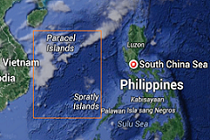 Courtesy: Google Maps
Courtesy: Google Maps
Braving potential retaliation from China, the Philippines has now challenged Beijing’s sovereign claims over the South China Sea before a UN tribunal, and raised the stakes in a longstanding dispute
Dr. Kanti Bajpai, Professor, Lee Kuan Yew School of Public Policy, Singapore, talks about the reasons for the breakdown in the India-U.S. bilateral. In an interview to Gateway House, he also examines the recent strides taken in deepening India-Japan ties and the new government’s priorities in East Asia
 Courtesy: Gateway House
Courtesy: Gateway House
This report of Gateway House's Policy Trip to Myanmar recommends how India can participate in Myanmar’s emerging market and enhance India’s trade and strategic interests in Asia
 Courtesy: Spike Call U.S Navy/Wikimedia Commons
Courtesy: Spike Call U.S Navy/Wikimedia Commons
The Indian Navy, through multi-lateral exercises, is increasing its sphere of influence and becoming a regional force. Yet, it needs to be supported by policy decisions that enable it to achieve its potential as a state-of-the-art establishment and a powerful tool in India’s diplomatic repertoire
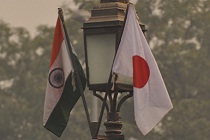 Courtesy: generalising/Flickr
Courtesy: generalising/Flickr
The India-Japan alliance needs to be viewed through a prism broader than that of "containing" China, and by treating the Indian and Pacific oceans as a single entity. Such an alliance has the potential to strengthen the geopolitical security of India and Japan, along with that of all their allies and associates
 Courtesy: Asitimes/ Flickr
Courtesy: Asitimes/ Flickr
Indian and Chinese companies routinely bid against each other in their quest to secure oilfields and other resource pools resulting in rising prices. However, a preferable recourse would be for the nations, along with ASEAN, to collaborate as there is enough for all
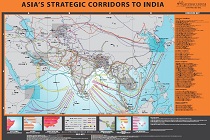 Courtesy: Gateway House
Courtesy: Gateway House
The map – Asia’s Strategic Corridors to India – has emerged from Gateway House’s study of India’s strategic links with other parts of Asia. It highlights the progress India has made in forging multiple links with six strategic regions – Central Asia, West Asia, East Africa, South-East Asia, East Asia, and our immediate neighbourhood
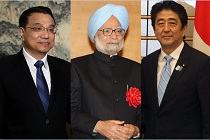 Courtesy: Ministry of External Affairs, India
Courtesy: Ministry of External Affairs, India
While the recent India-Japan Joint Statement contains significant breakthroughs, the China-Pakistan Joint Statement reveals the absence of warmth between India and China. With the current flurry of bilateral exchanges, India is fine-tuning its approach to emerging regional realities, as are others.
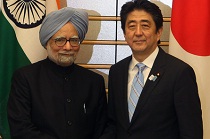 Courtesy: Ministry of External Affairs, India
Courtesy: Ministry of External Affairs, India
During his visit to Japan, Prime Minister Manmohan Singh spoke of the need to increase bilateral consultations on strategic issues. This, and other moves, indicate new developments in India’s Look East Policy, with alternative security and economic scenarios for regional actors in the context of the rise of China
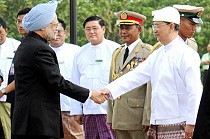 Courtesy: Ministry Of External Affairs, India
Courtesy: Ministry Of External Affairs, India
As a neighbour, India has legitimate interests in Myanmar, especially for peace and progress in its North East. More recently though, the Myanmarese are looking to imbibe democratic values from India, learn about regulations, banking systems, commodities exchanges, media councils, software and telecom skills